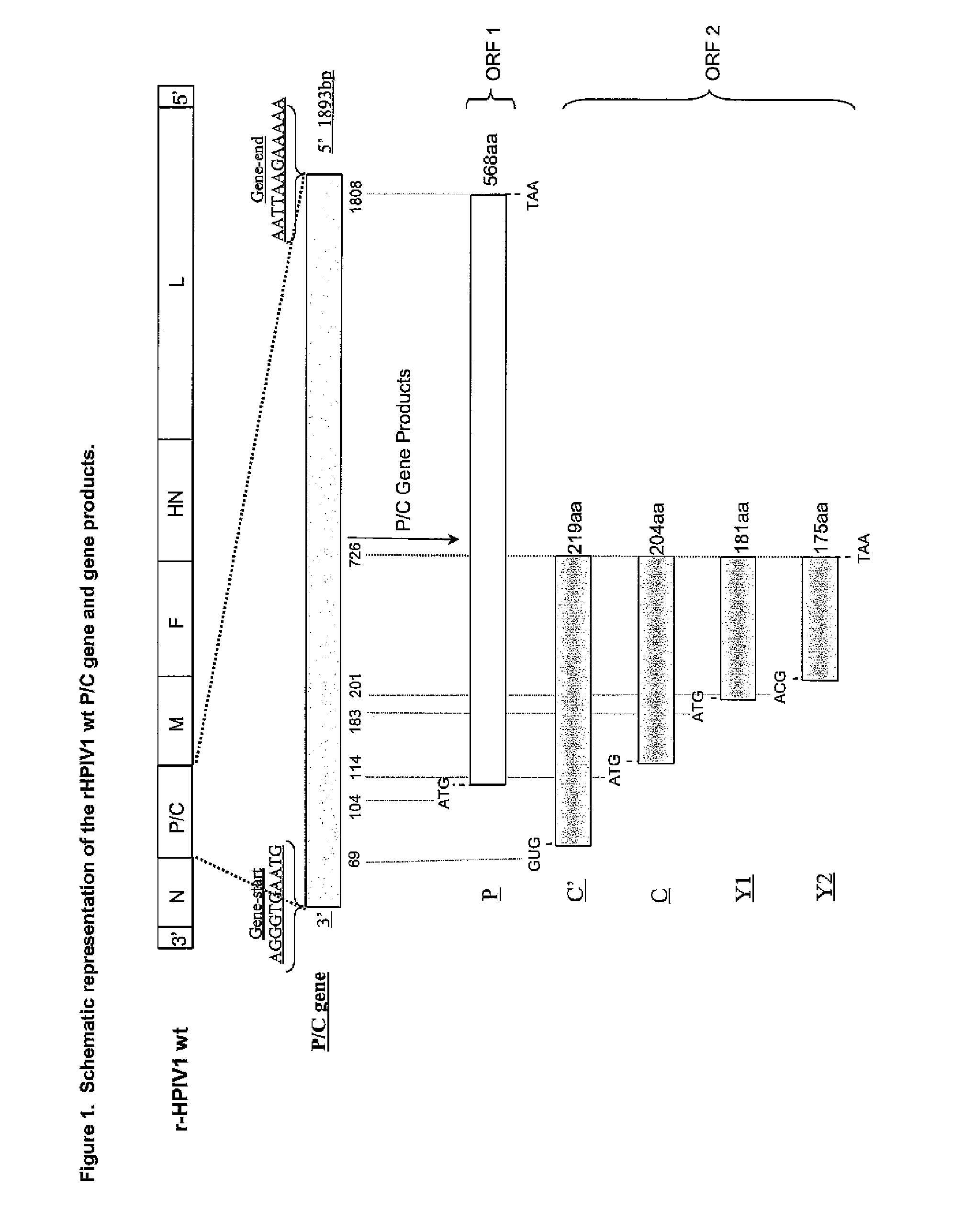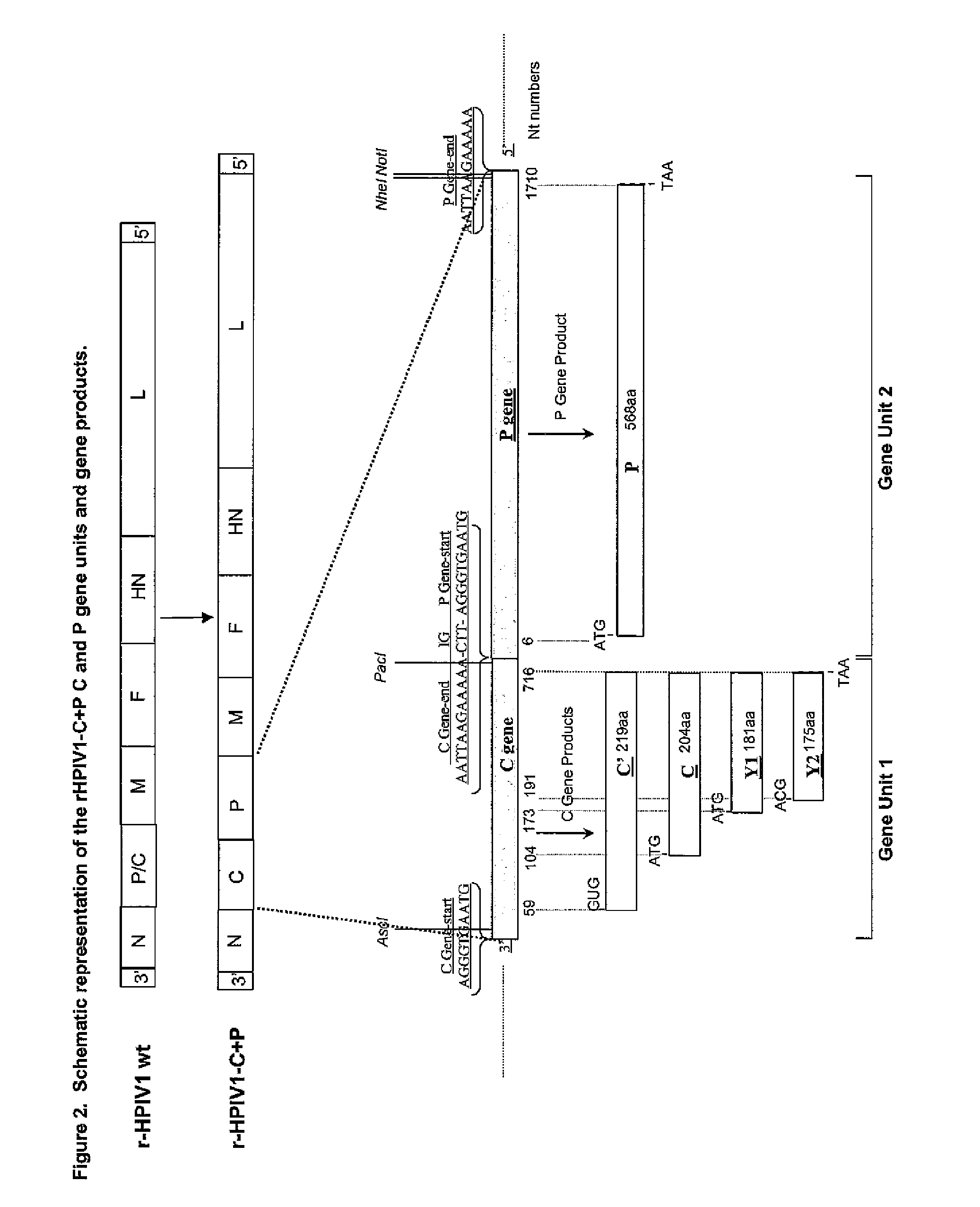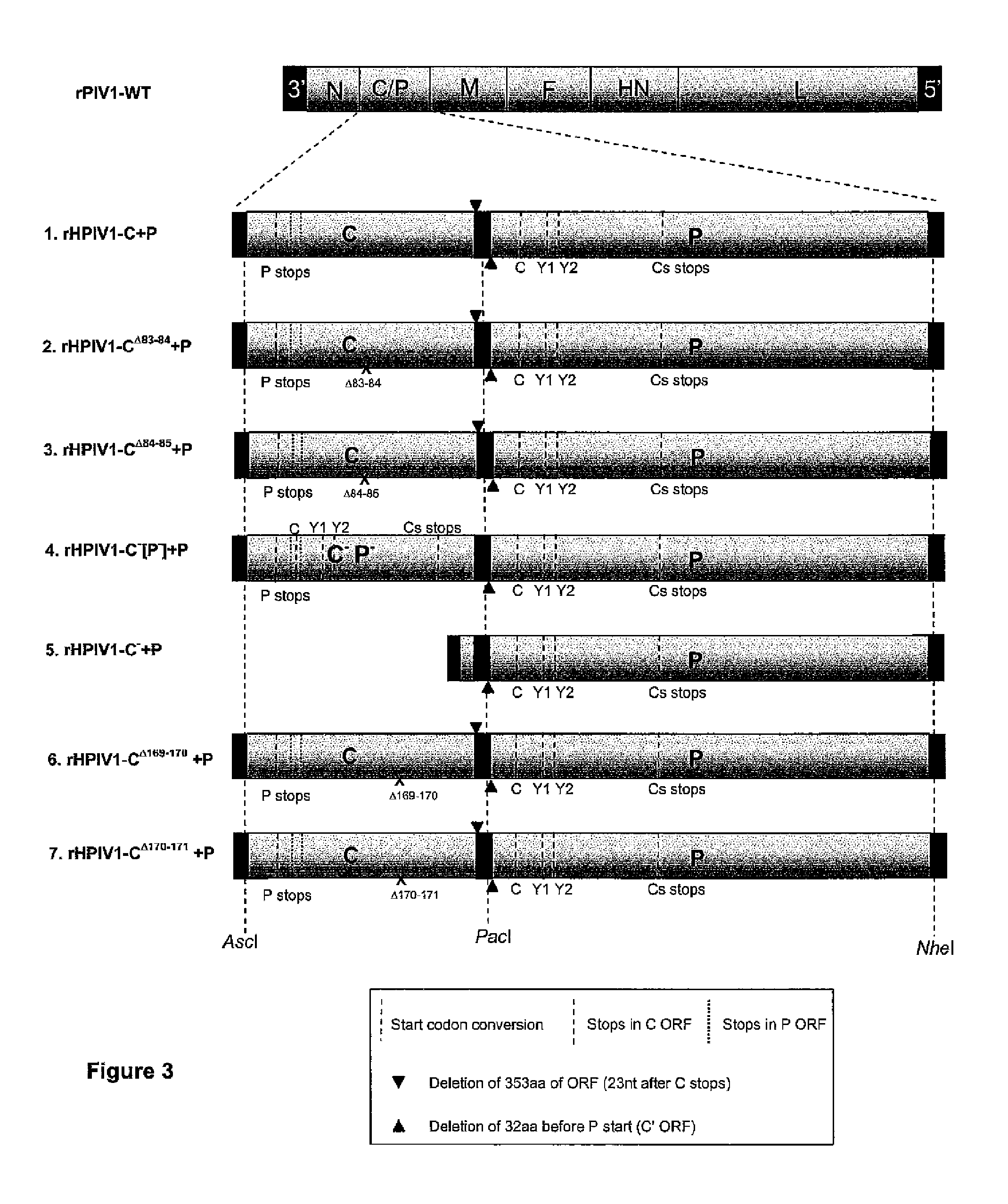Human parainfluenza viruses having separated p and c genes
a technology of human parainfluenza virus and p and c genes, which is applied in the direction of antibody medical ingredients, drug compositions, immunological disorders, etc., can solve the problems of limiting the use of chimeric hpiv3 vaccines bearing heterologous, undesirable negative strand viruses as vectors, and no parainfluenza virus vaccines availabl
- Summary
- Abstract
- Description
- Claims
- Application Information
AI Technical Summary
Benefits of technology
Problems solved by technology
Method used
Image
Examples
example 1
Cloning Strategy for the Production of the pFLC-rHPIV1-C+P cDNA Plasmid
[0169]Separating the overlapping open reading frames (ORFs) of the P / C gene of HPIV1 into two separately transcribed gene units.
[0170]The starting point in constructing pFLC-rHPIV1-C+P was the consensus sequence of the wild type (wt) HPIV1 strain Washington / 20993 / 1964 (Genbank accession # AF457102). A recombinant full-length DNA clone (FLC) of this HPIV1 was made and, using site-directed mutagenesis, 3 additional unique restriction enzyme sites were introduced: MluI (ACGCGT, pre-N ORF position, nucleotide numbers 113-118), AscI (GGCGCGCC, pre-P / C ORF position, nucleotide numbers 1801-1808) and NotI (GCGGCCGC, post-P / C ORF position, nucleotide numbers 3634-3641). In addition this clone contained a single point mutation in the HN gene, HNT553A, which has been previously described [Bartlett, E. J. 2006. Vaccine. 24:2674-2684]. This cDNA clone was termed pFLC-rHPIV1-MluI / AscI / NotI, and was used to prepare pFLC-rHPIV1...
example 2
Production of Variants of rHPIV1-C+P Containing Mutations in the C Gene Unit
[0182]A) Introducing Mutations into the pFLC-rHPIV1-C+P cDNA Plasmid:
[0183]Modified versions of the pFLC-rHPIV1-C+P HNT553A cDNA clone were prepared by site-directed mutagenesis and standard molecular cloning techniques to introduce mutations of interest into the C proteins of the virus, see Tables 1 and 3. Mutations were inserted into Gene Unit 1 of the pFLC-rHPIV1-C+P HNT553A cDNA (FIG. 2) such that the virus would express variant C proteins and a wild type P protein. When introducing defined mutations into the C gene unit, it is desirable not to have unintended mutations introduced into the P protein since such mutations could affect a function of P that could adversely alter the properties of the recovered virus. Such properties could include an alteration in the growth of such a vaccine candidate, i.e., one bearing an attenuating mutation in C and an unintended mutation in P, in cells used for vaccine m...
example 3
Cloning Strategy for the Production of HPIV3-P+C.
[0187]The starting point for constructing HPIV3-P+C was pUC(GE / GS)P-M (Skiadopoulos et al Virology 297:136-152, 2002). This was a PmeI-BamHI fragment spanning nt 1215-3903 of the HPIV3 wt genome that had been subcloned and modified as follows: (i) individual nucleotides within positions 3693-3698 (of the complete antigenome sequence) were changed to introduce an AflI site, and (ii) this AflI site was used to accept a short DNA insert that contained an HPIV3 gene junction followed by several convenient cloning sites (Skiadopoulos et al Virology 297:136-152, 2002). The resulting plasmid pUC(GE / GS)P-M was thus designed so that an insert cloned into a MluI site would be situated downstream of the P gene and under the control of an independent set of gene-start and gene-end signals.
[0188]As shown in FIG. 5A, the P / C / V / D gene of HPIV3 has the potential to encode a complex array of proteins. P and C are expressed separately from overlapping ...
PUM
| Property | Measurement | Unit |
|---|---|---|
| Fraction | aaaaa | aaaaa |
| Temperature | aaaaa | aaaaa |
Abstract
Description
Claims
Application Information
 Login to View More
Login to View More - R&D
- Intellectual Property
- Life Sciences
- Materials
- Tech Scout
- Unparalleled Data Quality
- Higher Quality Content
- 60% Fewer Hallucinations
Browse by: Latest US Patents, China's latest patents, Technical Efficacy Thesaurus, Application Domain, Technology Topic, Popular Technical Reports.
© 2025 PatSnap. All rights reserved.Legal|Privacy policy|Modern Slavery Act Transparency Statement|Sitemap|About US| Contact US: help@patsnap.com



